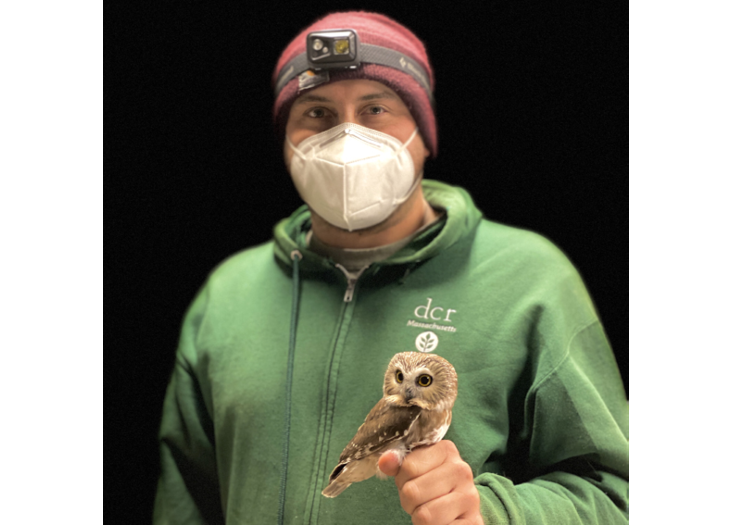Sean Riley

The author holds a banded Northern Saw-whet Owl. Photograph by Casey Riley.
For most folks, September means the end of summer, but for me and many other owl researchers it means it is time to find all of the nets and banding equipment likely stowed away hastily after a number of sleepless months the year prior. October 1 is the official opening night of my Saw-whet Owl banding season, a date I carried over from my mentors, and also a rough, if unofficial, start to when most of our northern owl species begin their slow travel southward.
Unlike traditional bird migrations, the movements of some of our northern owl species are now seen as nomadic. Northern Saw-whet Owls, Long-eared Owls, Short-eared Owls, and Snowy Owls move south in varying numbers each year, with no real urgency and no set destination. Although all of these species can survive cold winters in the north, many individuals will choose to leave their breeding grounds for the milder weather and more abundant food to the south.
To view the rest of the article you'll need to
subscribe. Bird Observer publishes original articles on birding locations, on avian populations and natural history, on regional rarities, field notes, field records, photographs, and art work.